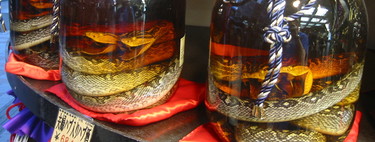It’s enough to criminalize the poor boa constrictors. Enough of prejudices and inaccuracies. No, it is not true that when the poor boas wrap themselves around a bird or a lizard (when they draw them into one of their warm, firm and intense embraces) they are trying to suffocate them. Nothing of that. What boas do by slowly but relentlessly squeezing their victims is simply blocking blood circulation. Okay, so explained, it still doesn’t sound as good as I thought and you were right: boa constrictors are very careful critters.
But also some very interesting critters. For example, for years scientists have wondered how the snakes themselves keep from suffocating during the process. And it is that, a little we reflect on it, it is surprising: even with their lungs tightly squeezed in full constriction, boas can continue to breathe with apparent normality. Now we have an answer.
A nasty job, but someone has to do it. For months, a team of researchers at Brown University has been watching the snakes kill their lunch while monitoring them with electrodes and scanning them using X-rays. The idea was to get a fairly accurate (and realistic) picture of the mechanisms used by these predators to take in air while their body was in a gibberish.
Breathe with the whole body. What they have discovered is that the snakes change their breathing style and use the back parts of their long lungs and bodies to keep the flow of oxygen constant. When they’re not massaging their victims, boas breathe with the movements of their ribs, expanding and contracting muscles to fill and empty their lungs. It’s almost an accordion.
This type of resting breathing has its “epicenter” at the front of the snake, around the heart. But when they start to curl up, boas use precisely those muscles to squeeze their victims. Therefore, the work of breathing is shifted to the back. This, by the way, solves a much older problem.
An evolutionary puzzle. And it is that researchers have spent decades thinking about why the lungs were so long. Especially since the end of these don’t have enough blood vessels to be effective in supplying air: they didn’t seem to have any real functionality. Now it makes sense: that useless bag is a bellows.
The question now is what came before: the chicken or the egg. Did this adaptation arise as a response to the practice of constriction or was it prior to it (and what, in the end, allowed it to take place)? And it is that although it seems an evolutionary curiosity with little game, it can give us the key to how the respiratory systems of the first land animals evolved. Who would have imagined that a boa would give so much.
Image | Jan Kopriva
George is Digismak’s reported cum editor with 13 years of experience in Journalism
